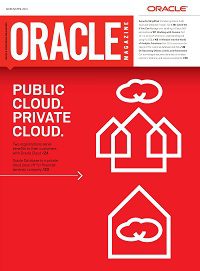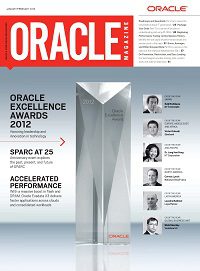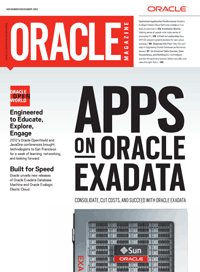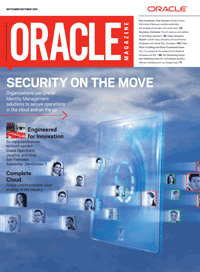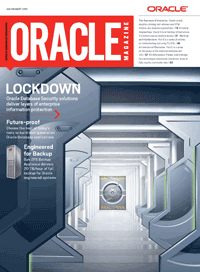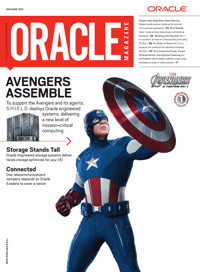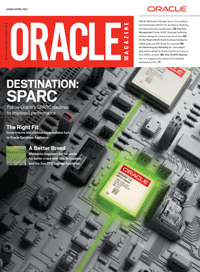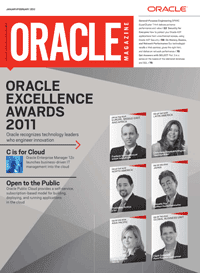Pada artikel sebelumnya Sudah dijelaskan tentang Oracle Database XE. Mudah-mudahan Anda sudah mencoba mengunduh dan menginstallnya. Untuk menguji hasil instalasi Oracle Database XE pada komputer Anda, lakukanlah sejumlah langkah-langkah berikut ini:
-
Jika browser internet Anda belum menampilkan homepage Oracle Database XE maka jalankan browser Anda dan ketikkan alamat beikut ini, http://127.0.0.1:8080/apex
-
Berikut ini adalah tampilan homepage Oracle Database XE dalam browser Anda.

-
Login sebagai user SYSTEM dengan password yang Anda tentukan pada saat proses instalasi sebelumnya. Jika browser Anda menampilkan homepage seperti di bawah ini maka proses instalasi Anda sudah berjalan dengan sukses.

Mengkonfigurasi Alokasi Memori
Oracle XE dapat berjalan dengan lancar pada komputer dengan memori hanya 512 dengan sistem operasi Windows XP. Secara default biasanya Oracle akan mengalokasikan ± 128MB sebagai System Global Area (SGA). Langkah ini mungkin perlu Anda lakukan jika Anda memiliki kapasitas memori yang terbatas, atau Anda hanya ingin mengalokasi memori bebas yang lebih besar untuk menjalankan program lain, seperti Visual Studio IDE.
Sebelum kita berlanjut lebih jauh, ada baiknya jika kita terlebih dahulu memperjelas bagaimana oracle mengalokasikan memori sistem. Seperti yang sudah disebutkan di awal bab ini, ketika sebuah instance database oracle berjalan, maka oracle akan mengalokasikan memori untuk bebrapa keperluan, pertama adalah memori untuk menjalankan program-program yang residen di background, kedua adalah memori untuk SGA, dan ketiga adalah memori untuk Program Global Area (PGA).
System Global Area (SGA) bagian memori yang akan digunakan secara berbagi pakai di antara semua user yang terkoneksi ke database. Data berbagi pakai ini misalnya adalah buffer cache yang berisikan data dalam yang paling sering digunakan, serta shared pool yang berisikan perintah-perintah SQL yang sering digunakan. SGA dialokasikan pada saat database pertama kali dijalankan dan memiliki nilai maksimum. Perubahan terhadap nilai maksimum SGA baru akan berpengaruh setelah database di-restart.
Untuk mengubah target SGA, lakukanlah langkah-langkah berikut ini:
-
Pastikan bahwa Anda masih login sebagai Administrator, seperti yang dijelaskan pada bagian sebelumnya.
-
Tekan tombol kiri mouse Anda pada icon Administration, kemudian pada icon Memory.

-
Kemudian pilih link Configure SGA pada bagian Tasks.
-
Ubahlah nilai target SGA sesuai keingnan Anda, namun pastikan nilai SGA tidak kurang dari 80MB, karena jika kurang dari 80MB oracle database Anda tidak akan berjalan.

-
Tekan tombol [Apply Changes].
-
Kemudian bukalah dialog services melalui Start > Settings > Control Panel > Administrative Tools > Services, kemudian pilihlah service OracleServiceXE. Tekan tombol kanan mouse Anda dan kemudian pilih Restart.
-
Refresh page Memory di browser, maka alokasi SGA database Anda sudah berubah.
Sedangkan Program Global Area (PGA) adalah bagian memori yang dialokasikan untuk setiap sesi atau koneksi database dan berisikan informasi khusus milik sesi atau koneksi bersangkutan. Salah satu penggunaan yang umum adalah untuk melakukan sorting terhadap data yang diminta oleh user bersangkutan. Nilai dari PGA bukanlah nilai maksimum seperti halnya SGA, namun lebih berupa target total akumulai memori yang dialokasikan untuk semua sesi atau koneksi database. Kalaupun kemudian alokasinya melebihi target, maka oracle sebisa mungkin akan mengubahnya sampai mendekati target. Perubahan terhadap nilai PGA akan langsung berpengaruh pada saat sesi atau koneksi berikutnya.
Untuk mengubah target PGA, lakukanlah langkah-langkah berikut ini:
-
Pastikan bahwa Anda masih login sebagai Administrator, seperti yang dijelaskan pada bagian sebelumnya.
-
Tekan tombol kiri mouse Anda pada icon Administration, kemudian pada icon Memory.
-
Kemudian pilih link Configure PGA pada bagian Tasks.
-
Ubahlah nilai target SGA sesuai keingnan Anda, namun pastikan nilai SGA tidak kurang dari 80MB, karena jika kurang dari 80MB oracle database Anda tidak akan berjalan.

-
Tekan tombol [Apply Changes].
Mengaktifkan User HR
Schema atau user HR adalah contoh schema yang disediakan secara default pada semua edisi Database Oracle. Secara default schema ini terkunci (locked) sehingga kita harus mengaktifkannya terlebih dahulu sebelum dapat menggunakannya. Untuk mengaktifkan schema HR lakukanlah langkah-langkah berikut ini:
-
Pastikan bahwa Anda masih login sebagai Administrator, seperti yang dijelaskan pada bagian sebelumnya.
-
Tekan tombol kiri mouse Anda pada icon Administration, kemudian pada icon Database Users.
-
Tekan tombol kiri mouse Anda pada icon HR untuk menampilkan detail informasi dari user tersebut.

-
Under Manage Database User, enter the following settings:
-
Untuk Password dan Confirm Password: ketikkan hr untuk passwordnya.
-
Pada Account Status: Pilih Unlocked.
-
Untuk Roles: Pastikan bahwa CONNECT dan RESOURCE sudah diberi tanda cek.

-
Tekan tombol Alter User.
Login sebagai user HR
Untuk menguji apakah user HR sudah benar-benar aktif, maka kita dapat mencoba untuk login ke database menggunakan user HR.
-
Saat ini seharusnya Anda masih login sebagai user SYSTEM, terlihat pada pojok kiri atas Database Home Page. Log out dari user SYSTEM dengan cara menekan tombol kiri mouse pada link Logout pada pojok kanan atas Database Home Page.
-
Pada halaman yang muncul, klik link Login.
-
Setekah muncul Login Page, masukkan hr sebagai username dan password.
-
Database Home Page akan muncul seperti gambar di bawah ini.

Ada sedikit perbedaan pada Database Home Page yang tampil ketika kita login sebagai HR, yaitu munculnya icon Application Builder. Icon ini tidak muncul ketika kita login sebagai user SYSTEM atau SYS.
Application Express adalah sebuah lingkungan pengambangan aplikasi dekalaratif (development environtment) yang di-hosting dalam Oracle Database untuk membuat aplikasi database berbasis web. Application Express bersifat deklaratif karena tidak memperkenalkan bahasa pemrograman baru, dan saat kita membangun aplikasi web menggunakan Application Express kita hanya perlu menentukan data yang akan ditampilkan beserta posisinya pada halaman web – deklaratif. Semua informasi ini akan disimpan sebagai metadata dalam database Oracle.
Ketika aplikasi dijalankan, secara realtime, engine Application Express akan membaca metadata yang tersimpan dalam database tersebut dan merender halaman web sesuai dengan deklarasi yang kita buat sebelumnya.
Saya akan membahas lebih jauh mengenai Application Express dalam posting-posting selanjutnya. Untuk mengetahui lebih lanjut mengenai Application Express, Anda dapat melihatnya di http://otn.oracle.com/apex/

